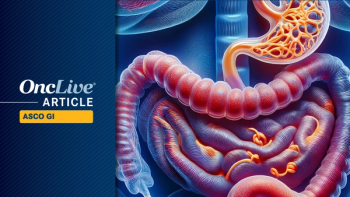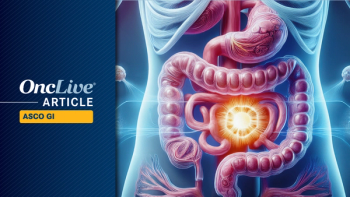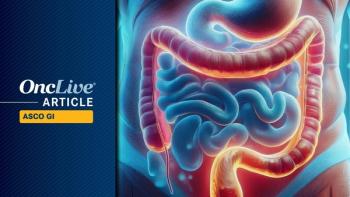
Trilaciclib Delivers "Unexpected" Survival Boost in TNBC
Key Takeaways
- Trilaciclib improved overall survival in mTNBC despite not meeting primary safety endpoints, showing a 60% increase in median OS with chemotherapy.
- The survival benefit may be due to increased chemotherapy exposure without added toxicity and enhanced antitumor immunity.
The investigational CDK4/6 inhibitor trilaciclib unexpectedly improved survival in metastatic triple-negative breast cancer despite failing to meet a safety-related primary endpoint.
Joyce O’Shaughnessy, MD
The investigational CDK4/6 inhibitor trilaciclib unexpectedly improved survival in metastatic triple-negative breast cancer (TNBC) despite failing to meet a safety-related primary endpoint, a randomized phase II study showed.
The addition of trilaciclib to gemcitabine/carboplatin chemotherapy did not reduce the frequency and duration of severe neutropenia as compared with chemotherapy alone. Progression-free survival (PFS) and objective response rate also did not improve with trilaciclib.
However, median OS improved by more than 60% with either of two different dosing regimens of trilaciclib and chemotherapy, as reported at 2019 ESMO Congress.
“The improved overall survival seen with the addition of trilaciclib to chemotherapy was unexpected,” said Joyce O’Shaughnessy, MD, of Baylor University Medical Center. “Possible explanations include the increased chemotherapy exposure in trilaciclib patients without increased toxicity. We also observed that trilaciclib-treated patients had a higher number of activated CD8-positive T cells over the first 5 cycles of chemotherapy, suggesting a potentially more functional leukocyte population with trilaciclib that could enhance antitumor immunity.
“In addition, recent preclinical studies in bladder cancer and triple-negative breast cancer have shown that CDK4/6 inhibitors can increase platinum sensitivity and decrease proliferation by inhibiting phosphorylation of FOXM1, a transcription factor commonly overexpressed in triple-negative breast cancer.”
The rationale for combining a CDK4/6 inhibitor with gemcitabine/carboplatin chemotherapy included the recognition that the standard chemotherapy regimen causes treatment-limiting cumulative myelosuppression, which may compromise antitumor efficacy. Chemotherapy-induced immune cell toxicity may limit host immune system response against TNBC, said O’Shaughnessy. Trilaciclib induces transient G1 arrest in immune cells and hematopoietic stem and progenitor cells, potentially helping to preserve T-cell function and bone marrow.
With the existing evidence in mind, a global, multicenter, randomized trial was conducted to evaluate the impact of adding trilaciclib to gemcitabine/carboplatin chemotherapy in patients with mTNBC. Eligible patients had laboratory/pathology-confirmed mTNBC and a treatment history of 0 to 2 prior chemotherapy regimens.
Investigators randomized 102 patients to 3 treatment groups: conventional gemcitabine/carboplatin chemotherapy administered on days 1 and 8; the same chemotherapy regimen plus trilaciclib; or single-agent trilaciclib on days 1 and 8, followed on days 2 and 9 by the trilaciclib/chemotherapy combination.
“The third group was included to evaluate whether a second dose of trilaciclib, given a day before each chemotherapy administration, would further increase the proportion of bone marrow cells in transient arrest at the time of chemotherapy administration, thus decreasing myelosuppression,” said O’Shaughnessy.
The primary endpoints of the trial were the duration of severe (grade 4) neutropenia in cycle 1 and the occurrence of grade 4 neutropenia during the treatment period. Key secondary endpoints were need for red blood cell transfusions, G-CSF administration, and platelet transfusions. Efficacy endpoints (all secondary) were objective response rate, PFS, and OS.
Baseline demographics and tumor characteristics were similar across the 3 treatment groups.
The addition of trilaciclib increased the duration of chemotherapy exposure and cumulative chemotherapy doses, as compared with administration of chemotherapy without the CDK4/6 inhibitor.
The median treatment duration was 3.3 months with chemotherapy alone as compared with 5.3 and 5.5 months in the two groups that received trilaciclib. Median cycles of therapy were 4 with chemotherapy alone and 7 to 8 with the addition of trilaciclib. The median cumulative doses of gemcitabine and carboplatin also increased with trilaciclib.
The addition of trilaciclib did not improve any of the safety/toxicity endpoints. Duration of severe neutropenia during cycle 1 averaged 1 to 2 days across the three groups. The proportion of patients with severe neutropenia during the treatment period ranged from 22.9% to 36.4% without any significant differences (P = .70). Similarly, none of the secondary safety/tolerability endpoints differed significant among the 3 treatment groups.
Although the addition of trilaciclib increased chemotherapy duration and exposure, neither hematologic nor nonhematologic toxicities differed substantively across the 3 treatment groups. Quality-of-life assessments showed no adverse effect of trilaciclib on patients overall functional level, said O’Shaughnessy.
With regard to antitumor efficacy, objective response rate ranged from 33.3% to 50%, and between-group comparisons showed no significant differences. PFS was numerically greater in the trilaciclib groups (9.4 and 7.3 months) but not significantly different from the patients who received chemotherapy alone (5.7 months).
Only the survival analysis yielded significant differences that distinguished the trilaciclib groups from the patients who received only chemotherapy. Median OS was 12.6 months with chemotherapy alone, 20.1 months with chemotherapy and concurrent trilaciclib, and 17.8 months with the additional doses of the CDK4/6 inhibitor.
Concurrent trilaciclib and chemotherapy was associated with a 67% reduction in the survival hazard as compared with the chemotherapy arm (P = .028). Concurrent therapy plus additional doses of trilaciclib decreased the survival hazard by 66% as compared with chemotherapy alone (P = .0023). Median OS also improved when combining the two trilaciclib cohorts and comparing this population to the chemotherapy-alone arm (HR 0.36; P = .0015).
In general, a subgroup analysis with pooled data from the two trilaciclib groups showed a consistent survival benefit versus chemotherapy alone.
Beyond TNBC, trilaciclib has shown myelopreservation benefits when used with atezolizumab (Tecentriq) and chemotherapy in patients with small cell lung cancer. In a press release, Mark Velleca, MD, PhD, CEO of G1 Therapeutics, Inc., the company developing trilaciclib, shared the next steps for the CDK4/6 inhibitor.
“Based on feedback from our pre­—[New Drug Application (NDA)] meeting with the FDA, we will begin a rolling NDA submission for small cell lung cancer in the fourth quarter of this year, which we expect to complete in the second quarter of 2020. We have also had initial discussions with the FDA regarding development of trilaciclib in triple-negative breast cancer, including the preliminary design of a phase III trial. In 2020, we plan to initiate a phase III trial in triple-negative breast cancer and a phase III trial in colorectal cancer, with the goal of demonstrating the benefits of trilaciclib to patients receiving chemotherapy for multiple tumor types.”
O'Shaughnessy J, Wright G, Thummala A, et al. Trilaciclib improves overall survival when given with gemcitabine/carboplatin (GC) in patients with metastatic triple negative breast cancer (mTNBC) in a randomized phase II trial. Presented at 2019 ESMO Congress; September 27 to October 1, 2019; Barcelona, Spain. Abstract LBA22.

























































































